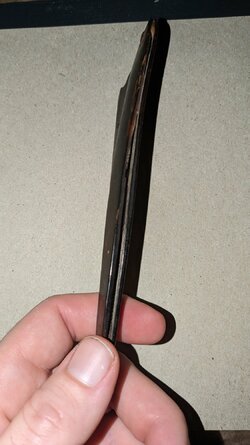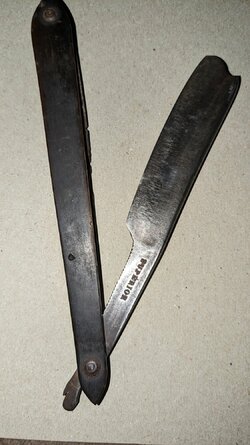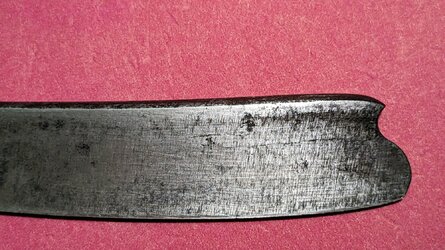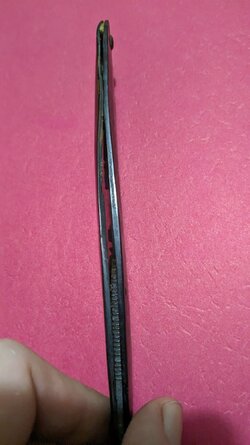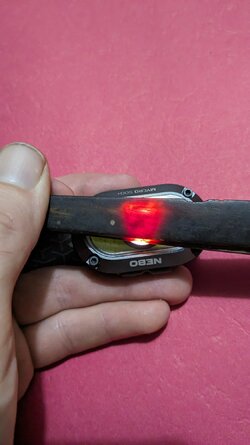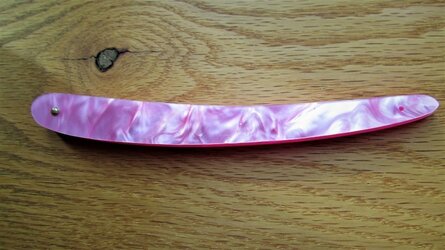Got this thing for like $4 there's no pitting but that's where the good ends. This will be my first restoration. Does anyone know where I can find some replacement scales everything I can find online everything I can seem to find are ~4 3/4" from center of pivot to the spacer this old guy measures about 5 1/16" from center of pivot to the toe. I can make my own from blanks if I have to but I would rather spend that time honing.
Also does anyone have any idea what's going on at the back of the tang there? My only guess is someone cut it down at some point. Regardless that will have to be addressed as well. It definitely looks like I have my work cut out for me.
Also does anyone have any idea what's going on at the back of the tang there? My only guess is someone cut it down at some point. Regardless that will have to be addressed as well. It definitely looks like I have my work cut out for me.
